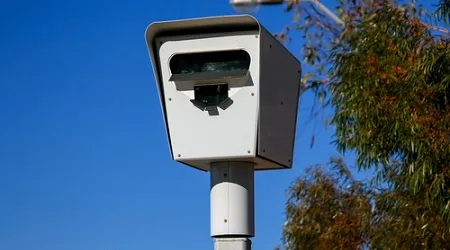NSW road deaths are down but traffic fines rise

Plus discover NSW's most dangerous school zones.
While the death toll on New South Wales (NSW) roads has reduced substantially over the past forty years, the value of traffic infringements has increased, due to the proliferation of speed and safety cameras and random breath tests (RBT).
New fatality statistics released by Transport for NSW reveal the number of road deaths per 100,000 people in NSW have dropped dramatically, from 28.9 in 1970 to 4.1 in 2014.
These new figures represent the lowest ratio of deaths since the beginning of the 20th century. In 1908 there were 7.6 deaths per 100,000 people. In recent years, NSW roads have become far busier. In 1910 there were around 4000 registered vehicles. Currently, there are about 5 million motor vehicles on NSW roads.
The greatest falls have been recorded since the inception of RBT in 1982, when the road deaths ratio was around 23 per 100,000 people.
The number of serious injuries as a result of road accidents in NSW have remained relatively steady over the last decade.
Serious injuries are those persons admitted to hospital because of injuries from a crash, who did not die within 30 days of the crash.
In 2005 there were 11,767 people seriously injured on NSW roads. Fluctuating modestly over the years, this figure has risen to 12,121 in 2015.
Statistics show the NSW government earned $103 million from speeding fines and $71.8 million from red light camera offences in 2015/16.
Analysing the Office of State Revenue's Red Light Camera Offences Report 2015/16, finder.com.au has identified the most dangerous school zones in NSW.
The southbound speed camera on Botany Road, operating in the vicinity of Gardeners Road Public School in the Sydney suburb of Rosebery, topped the list for most recorded incidents - 10,937 - in 2015/16.
East and westbound cameras near to Sydney Boys High School and Sydney Girls High School registered the next highest number of incidents, followed by the speed camera, positioned eastbound on Victoria Road outside Holy Cross College, Ryde.
Top 10 most dangerous school zones based on number of notices:
| Rank | Exact camera location | Incidents 2015/16 Financial Year | Related school |
|---|---|---|---|
| 1 | Botany Road, Rosebery, Southbound | 10,937 | Gardeners Road Public School |
| 2 | Cleveland Street, Moore Park, Westbound | 8,218 | Sydney Boys High School and Sydney Girls High School |
| 3 | Cleveland Street, Moore Park, Eastbound | 7,724 | Sydney Boys High School and Sydney Girls High School |
| 4 | Victoria Road, Ryde, Eastbound | 6,444 | Holy Cross College Ryde, and St Charles School Ryde |
| 5 | Pacific Highway, Wahroonga, Northbound | 5,973 | Knox Grammar Senior School, Abbotsleigh Senior School, Warrawee Public School |
| 6 | Princes Highway, Kogarah, Southbound | 5,868 | St Patricks Primary School, Bethany College, James Cook Boys High School, Moorefield Girls High School, Kogarah Public School |
| 7 | Pacific Highway, Wahroonga, Southbound | 5,490 | Knox Grammar Senior School, Abbotsleigh Senior School, Warrawee Public School |
| 8 | Woodville Road, Old Guildford, Southbound | 5,350 | Old Guildford Public School |
| 9 | Pacific Highway, Lindfield, Eastbound | 4,910 | Lindfield Public School |
| 10 | Hume Highway, Bankstown, Westbound | 4,289 | Bankstown North Public School, La Salle Catholic School |
Almost 500,000 speeding incidents occurred across all NSW cameras in 2015/16 and overall revenue totalled $103.5 million.
NSW has 132 speed cameras at 107 locations. 45 of these are located within school zones. The total face value for these school zone cameras in 2015/2016 was $33.6 million.
While NSW roads have become significantly safer in recent years, statistics released by the Bureau of Infrastructure, Transport and Regional Economics (BITRE) show fatalities across the country have been rising progressively.
There were 120 road deaths in Australia this past July, 26.8% higher than the same period five years ago.
The number of pedestrian motorcyclist and bicyclist deaths also increased year-on-year in July.
It's not all doom and gloom though. BITRE revealed the number of fatal crashes involving heavy vehicles in Australia have decreased dramatically over the last decade.
If you've been involved in a car accident, follow our step-by-step guide for what to do and who to contact.
Latest car insurance headlines
- Losing weight and gaining bank: 15 million Australians have set a resolution for 2025
- Holiday hacking: Turn 20 days into 57+ days off in 2025
- Apple vs Samsung vs Google – Whose phones and accessories impressed most?
- Boxing Day bonanza: Shoppers are expected to splash out $3.4 billion
- Sending money overseas for New Year? 5 transfer features you should look for
Picture: Shutterstock